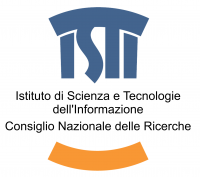Joan Antón Barceló
In the last decade, there has been a full renewal of ways of capture and management spatial data in archaeological dig (e.g. McCoy & Ladefoged 2009; Katsianis, M. 2012, Galloti et al 2012…among others). The impact of these new technologies has changed substantially the dig itself, data processing, analysis and visualization of results (Craing et al 2006; Sisk 2010; … Stal et al 2014).
Currently, we are witnessing a significant growth in archaeological literature about technological improvements. These seem to be the solution of problems that a few years ago were not treatable, but also they arise us a set of reasonable doubts as:
Are our archaeological/social questions about the intra-site in consistent with this technological plus?; Are the contributions from geomatics, computer science, mathematics, virtual reality… really useful for the resolution of certain topics in the study of intra-site?; and maybe more important issue: Are all this “technology cocktail” going beyond the intra-site principles developed by the New Archaeology around the spatial organization in hunter-gatherers camps?
This session aims to discuss about how these computational resources take us for better understanding of the social implications of occupations floors of hunter-gatherers groups (From Paleolithic to recent/actual hunter-gatherers communities). We would be delighted to have presentations about topics such as:
- Beyond GIS, synergies between media capture, data management & visualization. Or, some other way: How could integrate different methodologies and resources in an efficiently dig process and converge with the research needs?
- The efforts to build and connect different e-repositories with standards (i.e. SQL or Object-Oriented) for portability and interoperability of intra-site data from different sites, for example: Is it possible an open digital platform in spatial big data stores on occupation floors at Upper European Paleolithic?
- Spatial Statistics on board: During the dig time, we could apply basic statistical modules (i.e., frequency, correlations, regressions, etc.) with discontinuities and continuity spatial data to support the exploration of the artifacts and relationship with alternatives variables (slope, aspect, presence/absence of structures at vicinity…). How are these preliminary reports impacting at the dig strategy?
Also, we expect presentations on new lines of applicability at the intra-site of hunter-gatherers as: Structures from motion in data capture, Gigapan, advances in the visualization of archaeological data using glyphs units, the potential use of Spatial Data mining in big data repositories…


